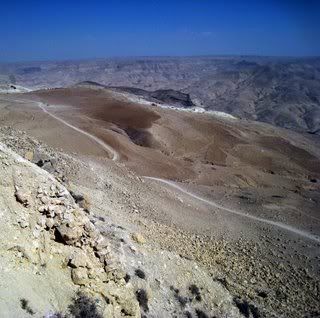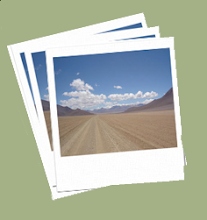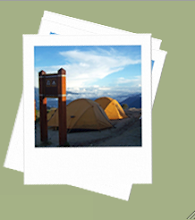
Day 1
In the early hours, we arrived in the bustling city of Amman, now with a population of some 3 million people including almost one million Iraqis who have left their own country and have helped to inject new wealth into Jordan. Our first day took us 45 km north to Jerash, quickly leaving the rush hour strewn motorways of Amman to cross rolling hills of olive groves, punctuated by small stands of pine and eucalyptus trees.
Jerash is a well preserved and sizeable Roman city, and now the site of the huge annual Jerash Festival of Culture & Arts, this year hosting Placido Domingo. Accessed through a vast monumental arch, built in commemoration of Hadrian, who visited the city in 129-130, we passed the Hippodrome to our left, this the site of ancient sporting festivals and chariot races, and now staging replica battles and chariot demonstrations again. We moved on through the South Gate, passing the lower terraces of the Temple of Zeus before admiring the impressive Oval Plaza, a large paved area enclosed by two curving colonnades. The nearby South Theatre is the largest of the city’s three theatres, built around 90 AD, with impressive acoustics, only marred by the rather sad appearance of a bagpipe and drum duo who ‘performed’ whilst we looked on.
A long hot walk took us down the city’s main street, the Cardo, which has amazing drainage systems for its day, and then we went up the hill to the imposing Temple of Artemis with views to the adjacent cathedral and North Theatre, whilst being serenaded by the midday call to prayer from at least five local muezzin from the settlements all around us.

Early afternoon we headed to the cooler hills to the west, en route to Aljoun, site of an impressive castle, constructed around 1184 by a close relative of Salah-al Din to limit expansion of the Crusader movement. Expansive views to the Jordan valley, although now very hazy.

A good day of archaeological exploration, aided by the fact that tourist numbers at this time of the year are low because of the heat. Their monuments are all the more attractive for the local white limestone that dominates all building in this region, with sympathetic restoration by the Jordanian authorities.
A very good dinner at Tannoureen in West Amman, rated the best place for Lebanese food in Jordan.
Day 2
Passing through Abdoun, the ‘Belgravia’ of Amman, we headed south on to the King’s Highway bound for Dana. After 30 km we reached Madaba, historically a Christian town and only recently Muslim dominated. The town is famed for its mosaic work in the many churches here, and we visited the best known, the Byzantine mosaic map of the Holy Land, situated in the Greek Orthodox church of St George, thankfully empty at the time of our visit whereas it is usually mobbed by visitors.

We then travelled a short distance north to Mount Nebo, the most important biblical site in Jordan and visited by the Pope in 2000. This is the site where Moses finally saw the ‘Promised Land’ after leading the Israelites in the desert for 40 years. Moses died here, his successor Joshua finally leading them into Canaan.

The Nebo site was sold to the Franciscans in 1933 and the Moses Memorial Church was being reconstructed at the time of our visit. Large mosaics, delicately lifted from other churches, were on display. There were huge, barren, views down to the Dead Sea, with Jerusalem beyond the haze and Jericho visible on the valley floor. We subsequently visited a local enterprise employing local handicapped people to create mosaics in the traditional way.
Then turning south again, we crossed the mighty Wadi Mujib, Jordan’s Grand Canyon, cutting through 1200m of desert plateau down to the Dead Sea in the west, reaching Karak, the most prominent town in southern Jordan, in time for a late lunch.
Karak still lies within the Crusader-era walls of the best preserved castle in the region and is in a perfect defensive position, naturally circled by deep wadis. Originated by the Crusaders in 1142 and led by the ruthless Reynald of Charillon who finally capitulated to Salah al-Din in 1188, the castle was subsequently rebuilt and strengthened by Ayyabid and Mamluke occupiers. We toured the castle walls, kitchens and dungeons, and managed to get access to the rarely visited Mamluke gallery at the lowest level of the castle wall. Karak itself is a bustling, largely Bedouin, market town, but one that descended into riots over food prices as recently as 1996.
The two hour drive to Dana took us into the increasingly inhospitable Shara mountains, attaining 1500m near the Dana turn off. Crossing another deep canyon, Wadi Hasa, we saw the extinct volcano known as the Black Mountain, a striking protuberance in an otherwise white limestone landscape.

Dana Guesthouse, operated by the RSCN, was a delightful surprise when we finally arrived late afternoon. With the only noise from the abundant local wildlife and the occasional distant call of the local shepherd boys, our simple rooms overlooked Wadi Dana itself, with distant, albeit hazy, views to the Israeli border. Quite wonderful.

I had a quick scout around the nearby abandoned village before returning to one of the best hotel balconies I’ve ever had, right on the edge of the wadi rim. A simple dinner with just water or tea on offer, followed by the clearest night skies I’ve seen in a long time. Stars in abundance!
Day 3
Awoke early, disturbed by one irritating mozzie, but enjoyed the dawn, with the emerging light progressively highlighting the bands of limestone and the lower strata of sandstone and granite. Fleeting views into Israel before the inevitable haze build up.

A pleasant breakfast, Arabian style, with flat bread dipped into olive oil and thyme, and a rather sweet concoction which can be best described as dried tahini which tasted rather like Turkish Delight.
We called in on the Dana Visitor Centre, which espouses sustainable tourism, and has a small workshop for local people producing small pieces of jewellery from silver and local malachite stone. There’s also a small processing plant for local nuts (almonds and pistachios) plus dried fruit and herbs. We then walked to the local spring created by a schism between the limestone and a basalt intrusion, followed by a bus and 4WD trip to the RSCN campsite on the northern edge of the wadi.

Some walking amidst the white sandstone blocks and a little bird watching took us up to lunch. Sightings included wolf and striped hyena tracks, plus a small but deadly scorpion found beneath a rock. Birds seen included hoopoe, Tristram’s grackle, Sinai rosefinch (the national bird of Jordan), green finch, honey buzzard and yellow vented bulbul.
A short journey out of the national park and 40 minutes on the King’s Highway finally brought us to Petra, an altogether more commercial environment of luxury hotels and tourist coaches. Petra is accessed via the rather scruffy little town of Wadi Musa and our hotel, the 5* Mövenpick, was well situated a couple of hundred metres from the entrance into Petra itself. After a quick dinner, we joined about 150 people for the night tour of Petra. Lined with candles, the route takes you down through the wadi known as the Siq, through towering rock walls, above which a moonless sky revealed a host of stars above. It’s a surprisingly long walk to the famed Treasury, but an easy one only punctuated by impatient Korean tourists desperate to be the first to survey the scene.
Arrival at the Treasury did not disappoint, emerging from a narrow gap in the wadi to be confronted by this magnificent sight illuminated by a ‘field’ of candles on the ground in front of it. Everyone was seated on rugs and treated to tea before a short rendition on a local string instrument and a haunting flautist who emerged from the base of the Treasury.

We left ahead of the madding crowd and enjoyed the walk back, pretty much alone, and in a respectful silence. Looking back to the entrance of the Siq from the dam, the white sandstone was illuminated by the light of an emerging moon, giving the whole area a spectral glow. Magical.

Day 4
We entered the Siq around 0830 and walked down in our small group, largely untroubled by the larger tourist groups starting their exploration. Towering multicoloured sandstone layers adorned the walls and the views did not disappoint.

The first view of the Treasury is stunning, and, fortunately, it was not too swamped with people. Rather than follow the main tourist trail into the outer Siq, our guide led us up on to the sandstone cliffs for a closer look at the Tomb of Unayshu, the Urn Tomb, the Silk Tomb and the Corinthian Tomb. Traversing the East Cliff gave us some space above the throngs below and great views to the Theatre and the main city area of Petra. Well worth the easy scramble. We then picked up the paved stone path into the city area and enjoyed a quick lunch at the Basin (owned by the Crown Plaza).

After lunch I roared up to the Monastery, 220m up a well graded track, in 35 minutes, grabbed the obligatory pictures and, enjoying the wild gorge views upon descent, managed to get back to the start point in an hour. Very hot indeed now, but rejected numerous offers of mule/camel rides and walked from the city back to the hotel in one hour. A good but somewhat expensive dinner in the Mövenpick restaurant rewarded the day’s efforts!
Day 5
Anna rested this morning whilst the rest of us took a short drive to Little Petra. A superb road led up the hill to the north of the hotel, winding through the white sandstone formations and affording a view down to the city of Petra far below. It was very hot today, estimated at mid ‘30s C.
Little Petra, used as a resting point for trading caravans in the Nabatean period, is a gem, and we had it completely to ourselves for well over an hour. Unlike Petra, this is not a place of tombs. It features many reservoirs built into the rock, used to store water guided by sculpted channels along the length of the wadi walls. Areas for communal dining were also seen. It took no more than 15 minutes to walk from end to end and we scrambled up to a few viewpoints along the way, often enjoying the spectacle in complete silence. The rest of the day was spent chilling out at the hotel, with a BBQ on the roof terrace for dinner.
Day 6
A late start took us back on to the King’s Highway, passing a clutch of new luxury hotels with great views down to the area before the entrance to the Siq. We slowly ascended the high flat plateau to ~1500m, with extensive views east towards Israel.

We finally reached the village of Rum, popping into the Visitor’s Centre out of 40 degrees of heat, and a quick lunch before loading ourselves into a 4WD for a three hour circuit of Wadi Rum.

Starting at the so-called ‘Seven Pillars of Wisdom', which stand at the entrance to this protected area, our route took us through Wadi Umm Ashreen, through the Red Dune area to Barrah Canyon before heading out to Jebel Khazali, situated amidst the desert space used in the filming of the film Lawrence of Arabia, and the view we were to enjoy overnight at our Bedouin camp. It was still very hot when we got there, after a very bumpy ride, 37 degrees C in the shade! We had a very chilled evening in and around the tent, gazing at the stars, iridescent in a totally clear sky. It was a very windy night though, tents flapping until past 0100, then total silence. Bliss.
Day 7
Up relatively early, although late to sleep meant missing the sunrise. A quick breakfast, then on to camels (mine the bad-tempered one) for a hour back to Rum. One hour was enough. No Michael Asher trips for me!!
Along drive north, about three hours, in very windy conditions which created numerous dust devils and larger dust storms as we headed north. We stopped for lunch in Madaba, then headed west past the Mount Nebo complex again before descending from 725m down to -400m, the Dead Sea, the lowest point on Earth.
On arrival at the Dead Sea Mövenpick it was very hot and sticky, about 40 degrees C. Hazy views across the Red Sea revealed the disputed West Bank and patrolling Israeli military helicopters were spotted later in the day. Late afternoon we finally had a swim (well, float) in the rather viscous waters of the Dead Sea, which is, in fact, now 25m lower than it was in the ‘50s due reduced inflow from the River Jordan and continuing evaporation. Incidentally, the salt content is around 30%, which compares to normal sea water at 3-4%.
A luxurious end to the trip.
Day 8
Return to London on Royal Jordanian Airlines. Clean, comfortable and efficient.
Summary
The Hashemite Kingdom of Jordan is a little gem, a real melting pot of complex history, vast landscapes and welcoming people. Samir, our guide, typified the land: born on the West Bank, but now settled north of Amman with a small farmstead, he is warm and generous in nature, modern in outlook, but steeped in the culture and history of his country. Petra will not disappoint: it is truly an amazing and somewhat humbling spectacle.
I thought that it might be too hot to visit Jordan in June, but the humidity is low and it keeps the tourist hordes away. If you want somewhere completely different to visit, just 5 hours from the UK, with archaeological interest, challenging landscapes, good food and friendly locals, then look no further.
Colin went on the Journey to Petra trip from The Adventure Collection, which has a brand new brochure, click on the link to find out more.
Journey to Petra last for nine days, and is priced at £1,199, flights inclusive. For reference, the tour code is: ACJO
Thanks for reading!
The Adventure Company
"Adventure is our middle name"
www.adventurecompany.co.uk













No comments:
Post a Comment